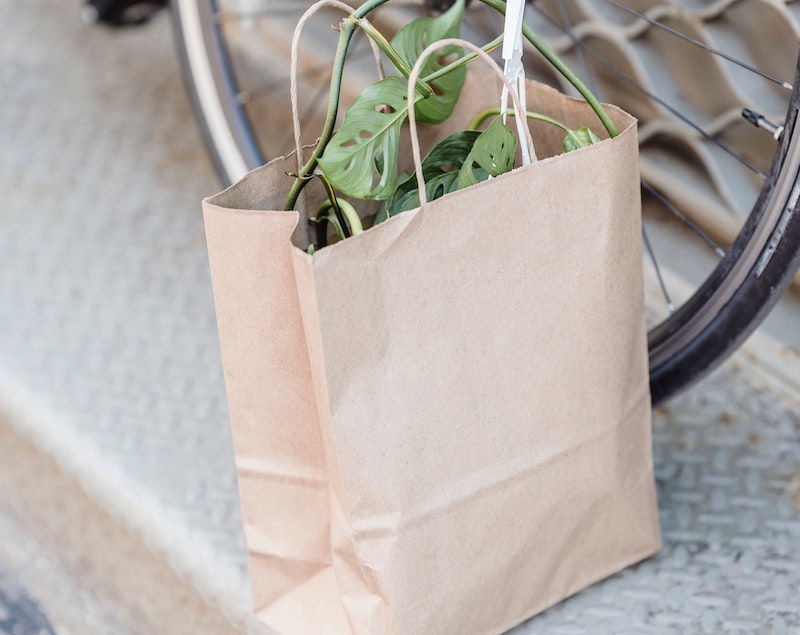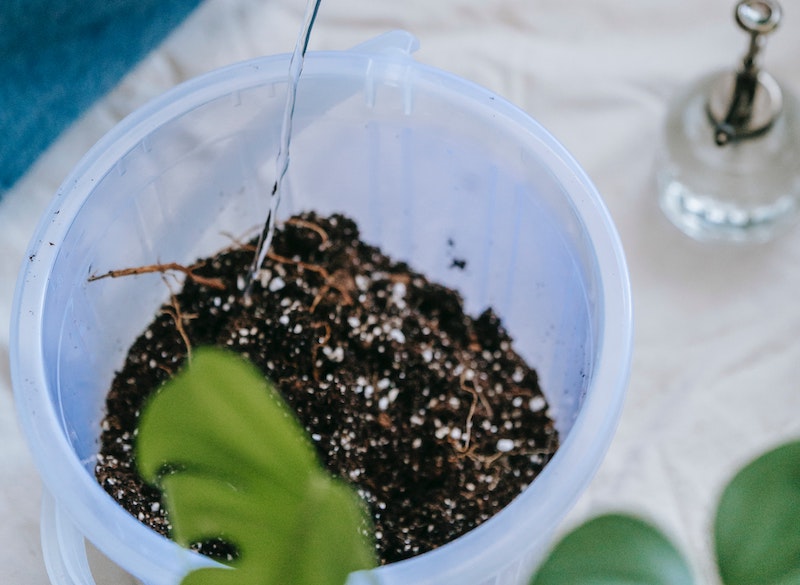Can you see roots peaking out of the bottom of your pot? Is it time to refresh the look of your current container? There are many reasons why you might think about repotting your Monstera. When you bring your first Monstera home from the nursery, you might be trying to make the decision between keeping it in its original pot or repotting it into something more trendy or decorative. Monsteras are also vigorous growers, and there will come a time when your plant will need a bigger pot. Changing pot type or size can also positively benefit the health of your plant.

Potting Monstera
It is always exciting to bring a new plant home from the nursery, especially a big beautiful Monstera! Before you leave the nursery, inspect the pot to determine if your plant is pot bound and needs a larger container. If the plant needs a bigger container or you want to give it a new look, choose a new pot to bring home too. Carefully transport your Monstera home. It is a good idea to quarantine a new plant from your existing houseplant collection to ensure you do not bring any unwanted pests home. Inspect your new Monstera for pests before purchasing and once you bring it home.
Repotting Monstera
There are several signs that help you determine if your Monstera is pot bound and needing to be repotted. If you can see the roots coming out of the drainage hole or if your pot is cracking, these are sure signs you need to repot your Monstera. Another way to tell if your Monstera might be root bound is if the plant has not pushed out any new growth lately. Quickly drying soil and or browning leaves are another sign that your Monstera is ready for a new pot. Lastly, if you haven’t repotted your plant in 2-3 years, it is likely ready for a bigger pot with refreshed soil.
Best Soil For Monstera
Monstera are native to tropical forest floors and therefore prefer rich, well-draining soil. Monsteras prefer good quality, nutrient-rich potting soil that is peat based. If planting outdoors, Monsteras like loamy or lightly sandy soils with an acid or neutral pH. If you would like to make your own soil mix, begin with a basic potting soil base, add coconut fiber, perlite, and compost or a granular fertilizer.

Monstera Drainage
It is important to choose the right pot for your Monstera, keeping in mind that it will need good drainage. If possible, choose a pot with drainage holes. Choose a matching or complementary saucer to go underneath your pot to contain any leaks of soil or water from your potted Monstera. If you have a pot that does not have a drainage hole and you are unable to create one, keep your Monstera in its original nursery pot and place it inside the decorative pot. Remove the nursery pot when the plant needs water.
 |
Author Katie Endicott - Published 4-08-2023 |
